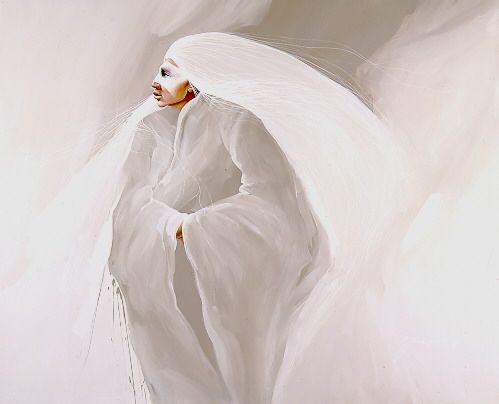Press release:
The Smithsonian’s National Museum of the American Indian opens two new tribal community exhibitions in the "Our Peoples: Giving Voice to Our Histories" exhibition; the Blackfeet Nation of Browning, Mont., and Chiricahua Apache of Mescalero, N.M. Both exhibitions were developed in collaboration with tribal community curators and National Museum of the American Indian’s curator Emil Her Many Horses (Oglala Lakota). This is the first time that new tribes have been rotated into the permanent galleries since the museum’s opening. The new sections open to the public Friday, Sept. 14.
More than 30 objects will be displayed, including the actual 1855 Treaty of Lame Bull on loan from the National Archives to be displayed for six months and then replaced with a replica for preservation purposes and a porcupine-quilled shirt, the type that might have been worn at the time of the signing of the 1855 Treaty. Featured objects from the museum’s collections include items from a lodge (tipi), such as a parfleche bag made of rawhide and used for storing clothing, a woman’s beaded dress from 1890 and several other historic and contemporary objects.
The Blackfeet exhibition highlights key themes in their history, starting with the revelation of sacred powers, creation stories and their close relationship with the environment. The importance of the medicine lodge (known as the Sun Dance among other tribes of the Plains), the introduction of horses and language preservation are elements that have kept this culture intact. The 1855 Treaty of Lame Bull and Baker’s Massacre in 1870 were pivotal points and show the interaction with the United States government and the resulting tragedies.
Through the contemporary leadership of the Blackfeet Tribal Business Council and efforts of the Blackfeet Community College, the Blackfeet people strive to live in a modern world while
maintaining their culture. The North American Indian Days, held in July, brings families together for the annual celebration of history and culture.
The Chiricahua Apache exhibition shows the forced journey the tribe has made from their homelands in the Southwest to Alabama, Florida., Oklahoma and Mescalero, N.M. where two-thirds of the Chiricahua finally made their home in 1913 along with the Mescalero and Lipan Apache groups. Still after imprisonment for 27 years, the Chiricahua maintained their tribal traditions and values.
Such leaders as Victorio, Mangas Coloradas Geronimo, Cochise and Naiche are highlighted, as well as contemporary leaders like Wendell Chino (Mescalero Apache), who has brought economic stability to the tribe through tourism, a tribal saw mill and fishery and other economic enterprises. Stories of origin and important community ceremonies including the girl’s puberty ceremony are described and shown through clothing and historical images. Objects include a dance shield, a painted hide created by Naiche, child burden baskets made of rawhide, saddles and a water jug made of pitch.
Animated videos and historical and contemporary images present the wide range of life and history for both communities.
In conjunction with the opening of the two new exhibitions, dance groups from each community will perform traditional dances in the Potomac atrium. On Friday, Sept. 14 at 10:30 a.m., the Rawhide Singers from Browning, Mont. will perform northern traditional and grass dances. The dancers are accompanied by singers on a drum. On Saturday, Sept. 15 at noon, the James Kunestsis Apache Crown Dancers from Mescalero, N.M. will perform traditional dances with large headdresses that are painted in the colors of the four directions. The dancers, also known as "Gaan" or "Mountain Spirits," are sent by the Creator to bless and teach the Apache. Both performances are free and open to the public.
Check out the website: http://www.americanindian.si.edu/
Monday, November 5, 2007
Subscribe to:
Post Comments (Atom)





No comments:
Post a Comment